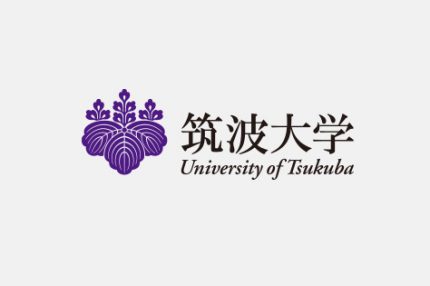重要なお知らせ
- 全大学院組織を学位プログラム制に移行しました。 (2020/03/26)
このサイトについて
このウェブサイトでは
- 筑波大学 理工学群 数学類 = 学士課程
- 筑波大学大学院 数学学位プログラム(数学専攻) = 博士 前期課程+後期課程
- 筑波大学 数理物質系 数学域 = 教員組織
の情報を提供しています。
トピックス
数学類新着情報
公開講座「身近な数学」
2025/05/12
2025年度公開講座を以下の様に開催いたします。主に高校生以上一般のかたがたが対象です。 日時 2025年7月19日(土)13:00~16:30 場所 筑波大学つくばキャンパス 第1エリア学群C棟1C210 講師 1)青嶋誠 「高次元の統計学」 2)川村一宏 「図形の体積と切り貼り」 対象 主に高校生以上一般のかたがた 受講料 無料 申込受付期間 2025年5月8日~6月19日 以下のURLからお申し込みください https://www.tsukuba.ac.jp/community/lifelong-extension/culture 定員40名(最大60名) 以下のページには講座資料も掲載されていますのでぜひご覧ください https://www.math.tsukuba.ac.jp/~aoshima-lab/jp/public_lecture.html ご不明の点がございましたら筑波大学社会連携課または以下にお問い合わせください。 たくさんの皆様のご参加お待ちしております。 世話人・問い合わせ先 川村一宏(筑波大学数理物質系数学域) kawamura_at_tsukuba.ac.jp _at_を@に変えてください
続きを読む受賞:海野 哲也さん(数学学位プログラム(博士前期課程)2年・優秀報告賞)
2024/09/18
2024年度統計関連学会連合大会 優秀報告賞理工情報生命学術院 海野 哲也受賞日:2024年9月5日 海野 哲也さん(理工情報生命学術院 数理物質科学研究群(博士前期課程)数学学位プログラム 2年次、指導教員:数理物質系 数学域 青嶋 誠 教授)は、2024年9月1日から5日に東京理科大学で開催された2024年度統計関連学会連合大会において、講演題目「正則化パラメータを使わない高次元特徴量のスパース推定」により、優秀報告賞を受賞しました。 この賞は、同大会コンペティションセッションにおいて、新しい問題提起と独創的な知見を展開した特に優れた講演に対して授与されるもので、主催6学会のいずれかに所属する30歳未満の若手研究者が審査対象となるものです。
続きを読む受賞:福島竜輝 教授(2024年度日本数学会解析学賞)
2024/08/28
数学域の福島竜輝教授が、「2024年度日本数学会解析学賞」を受賞されます。詳細は以下にあります。https://www.mathsoc.jp/publicity/analysis2024.html
続きを読む公開講座 「数学を楽しもう」R6. 7月20日_のお知らせ
2024/05/18
数学域が提供します、令和6年度 筑波大学公開講座 「数学を楽しもう」 令和6年7月20日(土)13:00-16:00於 筑波大学つくばキャンパス 1D棟201講義室 (クリックでアクセスわかります)対象 中高生から大人まで参加費無料講師と講座内容 筧 知之「円周率の探求」 増岡 彰「ガロアが創ったもの、夢見たこと」 ポスター ここをクリック つくばの数学域から2人の講師が、一般向けに数学の世界をやさしく紹介します。数学に興味がある、あるいはなんとなく気になる、あらゆる世代のご参加をお待ちしております。下記の要領で気軽にお申込み(6月20日〆切)ください。 https://p-gakushu.jp/tsukuba-koukai/index.php をクリックすると、「筑波大学公開講座運営システム」が開きます。そこから「数学を楽しもう」を選んでクリック、メールアドレス等を登録していただきます。 お問い合わせ先 増岡 彰 akira(at)math.tsukuba.ac.jp (at)を@に替えてください
続きを読む2024年度オープンキャンパス(大学院)開催のお知らせ
2024/04/12
本年度の筑波大学大学院数学学位プログラムオープンキャンパスは,オンライン・オンデマンド方式で開催します.学位プログラムの概要,入試情報,各分野の説明の動画と,修了生の就職状況を以下のサイトで公開しています. オープンキャンパスwebサイトへのリンク
続きを読む受賞: 坂本龍太郎 助教(令和5年度筑波大学若手教員奨励賞)
2023/10/18
数学域の坂本龍太郎助教が「令和5年度筑波大学若手教員奨励賞」を受賞されました。この賞は、本学の研究力向上に貢献し、業績をあげた若手教員に贈られるものです。
続きを読む
2024年度 卒業式&学位記授与式
2025/03/26
2025年3月25日(火)に筑波大学卒業式ならびに数学類学位記授与式が執り行われました. 心よりお祝い申し上げます.
続きを読む数学類生の活躍(永田学長がメレドフ・トルクメニスタン副首相兼外務大臣と面会)
2025/01/28
「永田学長がメレドフ・トルクメニスタン副首相兼外務大臣と面会」(https://www.tsukuba.ac.jp/news/20240124102500.html) のニュースの中で,数学類生の活躍が報じられています. (引用)式典では、本学理工学群数学類の学生が、同著者が詠んだトルクメン語の詩を朗読するなど、教育組織の壁が低い本学の教育課程の特徴を活かして身に着けた語学力を披露しました。
続きを読む筑波大学オープンキャンパス2024春
2025/01/25
筑波大学オープンキャンパス2024春のサイトが公開されました。 https://ac.tsukuba.ac.jp/spring2024 数学類は3月29日(金)に物理学類,化学類と合同で説明会を行う予定です。 皆様、ぜひご参加ください。
続きを読む2024年度数学類 体験学習が行われました
2024/07/30
7月28日(日)に体験学習2024が行われました.参加者は50名程度で大変盛況でした.暑い中,ご参加いただきました皆さま,誠にありがとうございました.
続きを読む筑波大学オープンキャンパス2024夏
2024/06/10
★ 筑波大学オープンキャンパス2024夏の特設サイトが公開されました.オープンキャンパス2024夏※ 数学類は 7/27 (Sat) にイベントを行います.午前中に物理学類,化学類と合同の説明会,午後に模擬授業&在学生との懇談会等を行う予定です.皆さま,奮ってご参加ください. ◆ 翌日の 7/28 (Sun) には数学類の体験学習もあります.こちらも是非ご参加ください.
続きを読む2024年度数学類 体験学習(7/28)
2024/06/10
数学類では体験学習を 7/28 (Sun) に行います.詳細は以下のページをご確認ください. 数学類体験学習 ※ 事前申し込みが必要です. 前日の 7/27 (Sat) に筑波大学オープンキャンパス2024における数学類のイベントがございます.こちらも是非,ご参加ください.
続きを読む
全大学院組織を学位プログラム制に移行しました。
2020/03/13

筑波大学は2020年4月より、全ての大学院課程を学位プログラム制へ移行し、「3学術院・6研究群」に改組再編しました。 全大学院組織を学位プログラム制に移行した今回の改革は日本初のことです。 本学は今後も急激に変化し、複雑化した現代社会のニーズに対応できる高度かつ多様な人材を養成していきます。 従来ならばひとつの専攻のみを担当していた教員が他のプログラムを協働指導できるようになり、学生の皆さんはより幅広い視野のもとで研究することが可能です。 数理物質科学研究科は5つの学位プログラムを持つ数理物質科学研究群(理工情報生命学術院)となりました。 ・数学学位プログラム(前期課程、後期課程)・物理学学位プログラム(前期課程、後期課程)・化学学位プログラム(前期課程、後期課程)・応用理工学学位プログラム -電子・物理工学サブプログラム(前期課程、後期課程) -物性・分子工学サブプログラム(前期課程、後期課程) -NIMS連携物質・材料工学サブプログラム(後期課程)・国際マテリアルズイノベーション学位プログラム(前期課程、後期課程)
続きを読む





